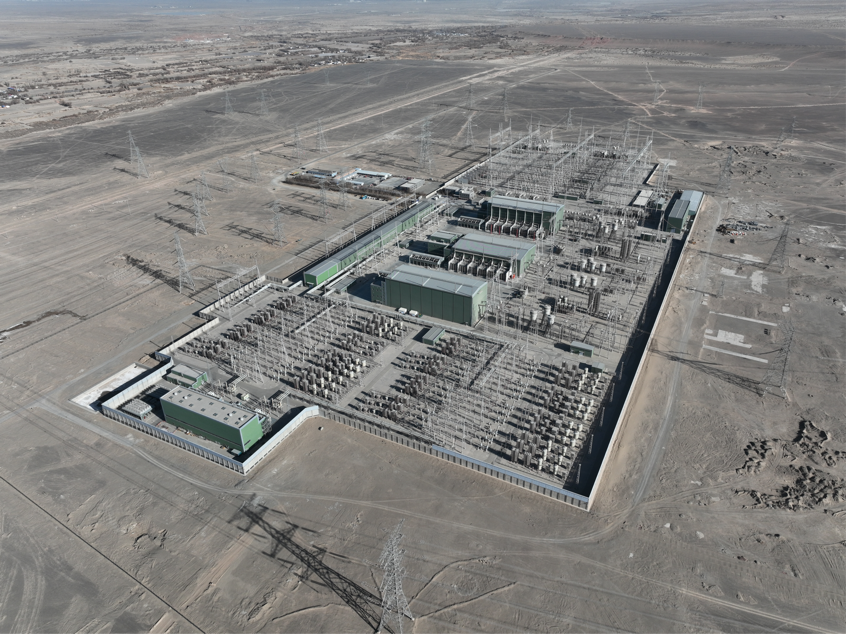
An aerial view of the Tianshan Converter Station in Hami, Xinjiang Uygur autonomous region. [Photo provided to China Daily]
Equipped with cutting-edge technologies, the Tianshan Converter Station, a linchpin in the country's vast electricity network, now plays an increasingly crucial role in power transmission to Central China.
Located in the southern part of Hami, Xinjiang Uygur autonomous region, the converter station is a key component of the Hami-Zhengzhou Ultra-High Voltage Direct Current transmission project. Covering an area of 519.1 mu in the region's arid expanse, it now boasts over 80 percent localization of its equipment, including domestically developed and manufactured 6-inch thyristors and single-phase dual-winding converter transformers, which represent some of the most advanced electrical equipment currently available around the globe.
"Tianshan Converter Station is a backbone of the Hami-Zhengzhou UHVDC network and functions as an expressway for power transmission to Central China. Its role is particularly critical during peak summer periods, as any malfunction could significantly impact the power supply to central regions," said Xun Chuanbao, the station's director.
As a key power node, the station has extensive and numerous equipment, posing significant safety risks and operational challenges. In this regard, it has developed an intelligent management system, which includes 3D models for comprehensive data interaction and virtual station visualization. It also uses big data for fault prediction and risk assessment, providing maintenance recommendations and optimizing automated inspections and fire safety controls, thus enhancing autonomous inspection capabilities within the station
"The use of advanced equipment greatly assists with our daily inspections. For example, we use drones to monitor the power grid lines. With them, we can even see if the screws on equipment in the air are loose," said Xia Caijun, an employee at the converter station
As of Aug 28, the Tianshan Converter Station has delivered a cumulative total of 388.05 billion kilowatt-hours of electricity, with 30.67 billion kW provided in 2024 alone.
Situated at the foot of the Tianshan Mountains, Hami is rich in wind and solar resources. However, only a small fraction of about 5 percent of this potential has been harnessed so far, said Li Jianyong, vice-governor of Hami. The region serves as a national base for wind and solar power, as well as playing a crucial node for the Xinjiang's power export, and also as the largest bundled wind, solar, and thermal power export base in the country, Li said.
In addition to the Hami-Zhengzhou ±800 kV UHVDC transmission line, Hami has established two other major power export channels — the Hami South-Dunhuang and Yandun-Qinghai Shazhou 750 kV AC lines. The latest ±800 kV UHVDC project from Hami to Chongqing is scheduled for completion by the end of 2025, Li said.
"By the end of 2025, Hami aims to have a total installed power capacity of over 52 million kW," the official said.
Currently, Hami's total electricity generation stands at 65.05 billion kWh, with 41 percent coming from renewable sources. The city has exported 66.61 billion kW of electricity, accounting for 52.7 percent of Xinjiang's total power export volume, according to the local government.
Source: By Li Jiaying, chinadaily.com, Aug 28, 2024 [https://www.chinadaily.com.cn/a/202408/28/WS66cf24d7a31060630b925759.html]

